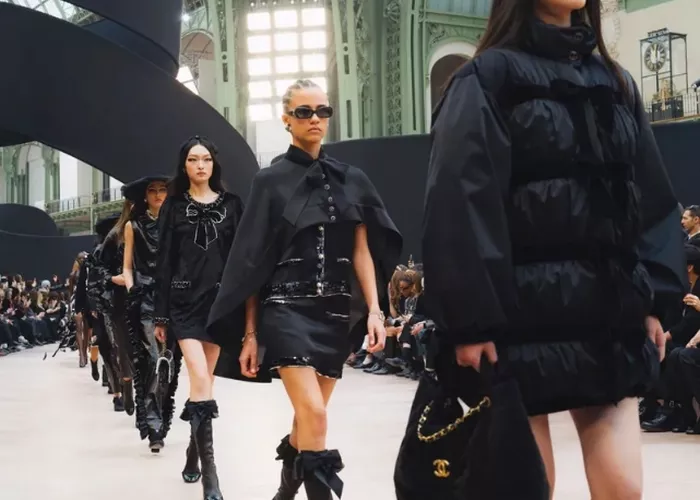The autumn/winter 25 runways seemed to follow a theme reminiscent of Amy Winehouse lyrics: black, black, black, with a hint of burgundy. Dior adhered to this monochromatic trend, showcasing everything from leather outfits to sheer dresses in the dark hue. Moschino, meanwhile, added a classic, witty twist, giving black a bit more dimension. Prada opened with four black dresses and closed with two black coats, stating to Vogue Business, “we are in a real black moment.” They were not alone in their choice.
Numerous other collections followed a similar palette, highlighting their signature styles in a more restrained shade range. While fashion has long embraced the chic allure of dark, mysterious tones, their overwhelming presence this season suggests something bigger at play—something beyond the simple seasonal expectations for autumn/winter collections. Many editors have labeled this trend as sombre.
Professor Carolyn Mair, a chartered psychologist and author of The Psychology of Fashion, explains, “Black and darker tones in fashion are associated with power, sophistication, and rebellion, mourning and loss.” This interpretation feels especially relevant in the context of the political unease and general apprehension currently felt within the fashion industry.
Mair continues, “As global conflicts, climate change, and AI-driven transformations continue to rise, their impact on creativity could be taking their toll.” She further adds that “darker tones have emerged previously during periods of financial downturns.”
This trend is particularly noticeable in the current fashion climate, where experts describe the industry as unstable, with brands frequently closing down and consumers becoming more cautious with their spending. These challenges likely contribute to the lack of colour seen on the runway.
However, the shift toward darker shades may not be purely emotional. “Today’s widespread industry challenges may be pushing designers to adopt a more serious, grounded aesthetic that is well-suited to investment pieces and wardrobe longevity,” explains Mair, noting that the focus on minimalist pieces is partly about reducing risk.
Rotate’s autumn/winter 25 collection, which debuted during Copenhagen Fashion Week, aimed for timelessness, as co-creative director Jeanette Madsen explained: “Pieces you’ll wear season after season.” The dark hues in the collection felt particularly poignant, especially as they contrasted with the bold, colourful designs typically associated with Danish fashion.
Each collection presented during this season seemed very safe and commercially focused, likely aiming to attract a broader audience and eliminate the uncertainty that comes with bold colour choices.
However, the shift to darker tones is not all negative. As with many elements of fashion, these colours are open to interpretation. While some designers are using them to make statements of mourning, others are embracing black to convey entirely different meanings.
For example, Rotate’s co-creative director, Thora Valdimars, emphasized that the inclusion of darker shades in their AW25 collection was intentional, aimed at capturing “that sense of glamour and sophistication,” a goal they certainly achieved. Similarly, Antonin Tron, who showcased his label Atlein in Paris, used dark tones to express “understated elegance and ease,” evoking a sense of “quiet strength and fluidity.”
One thing is certain: wardrobes are set to take on a deliciously dark tone this autumn, with each individual attributing their own meaning to the trend.
Related Topics
- Belly Pudge Dress Trend Empowers Women to Embrace Their Natural Bodies
- Passion of Three Women Transforming Egyptian Heritage into Fashion
- Toju Foyeh’s JEMIMA Collection Redefines Bridal Fashion for Empowered Black Women

